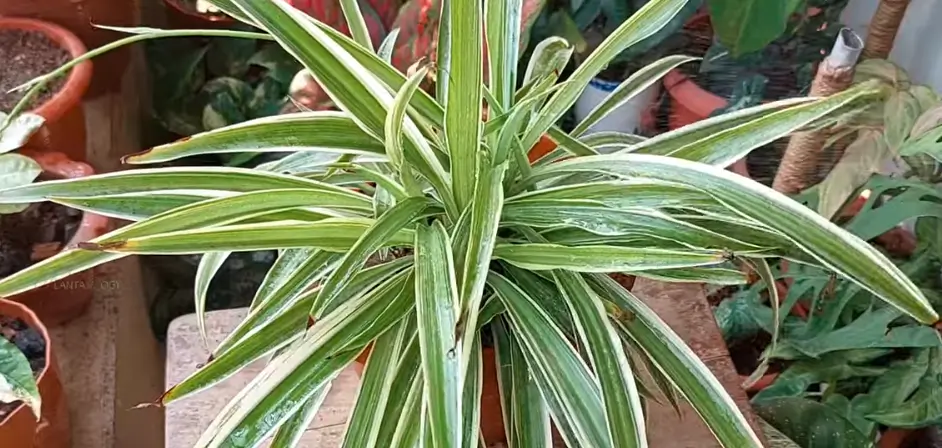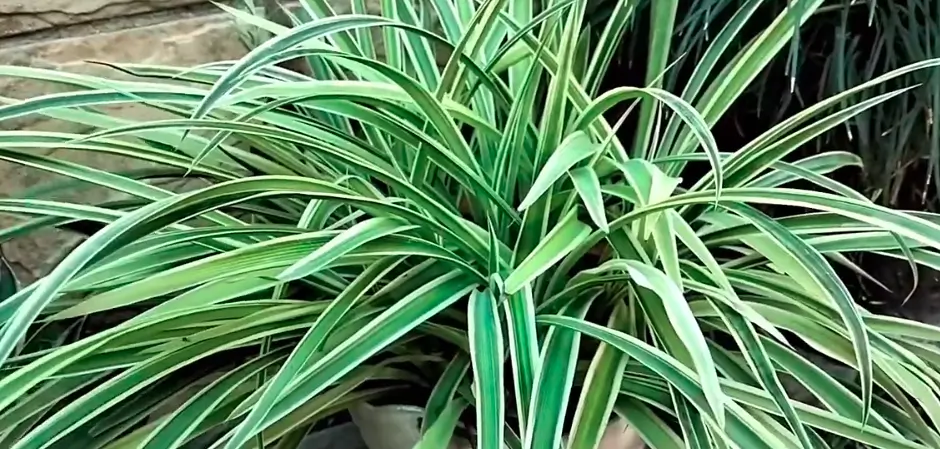Why Is My Spider Plant Pale And Limp?
Have you ever noticed that your once lush and vibrant spider plant is now looking pale and limp? If so, you’re not alone. Spider plants are popular houseplants due to their ease of care and air-purifying properties, but even the hardiest of plants can experience issues.
If you’ve ever experienced such issues, a question may arise: Why is my spider plant pale and limp? Your spider plant may be pale and limp due to inadequate light, overwatering, or nutrient deficiency.
In this blog post, we will explore some of the most common reasons spider plants can become pale and limp and provide some tricks to revive the plant.
What It Means For A Spider Plant To Become Pale and Limp
If your spider plant is becoming pale and limp, it may indicate that it is not receiving enough light or water. Spider plants prefer bright, indirect light and should be watered thoroughly but allowed to dry out slightly between watering.
Overwatering or underwatering can cause the leaves to turn pale and limp. Additionally, spider plants can benefit from occasional fertilization with a balanced fertilizer. Check the plant’s environment and adjust watering and light to help it thrive.
Why Is My Spider Plant Pale And Limp?
When spider plants start looking pale and limp, it can be concerning for plant owners. Several factors can contribute to this issue; addressing them is crucial to ensuring the plant’s health.
Soil
The first factor to consider is soil quality. Spider plants require well-draining soil that is rich in nutrients. If the soil is dry or lacks nutrients, the plant may look pale and limp.
Water
Overwatering or under watering can also cause spider plants to look pale and limp. If the soil is consistently waterlogged, it can lead to root rot, which can be fatal to the plant. On the other hand, if the plant is not getting enough water, it can wilt and become discolored.
Light
Spider plants thrive in indirect sunlight, and too much direct sunlight can cause the plant to look pale and limp. On the other hand, insufficient light can also affect the plant’s growth and color.
Fertilizer
Spider plants require adequate fertilization to maintain healthy growth and vibrant colors. Using a balanced fertilizer with a 20-20-20 NPK ratio is recommended. Over-fertilization can also cause the plant to look pale and limp.
Stress
Spider plants can experience stress due to various factors, such as changes in temperature or humidity, overcrowded roots, or pests. Stress can cause the plant to look pale and limp and even lead to its death.
Signs and Symptoms of a Pale and Limp Spider Plant
Like any plant, spider plants can experience issues affecting their growth and appearance. Here are some signs and symptoms of a pale and limp spider plant and what they could indicate:
- Fading Leaves: If your spider plant’s leaves are fading or losing color, it could be a sign of stress caused by overexposure to direct sunlight or inadequate lighting conditions.
- Droopy Leaves: Droopy leaves are a common sign of underwatering or overwatering. If the soil is dry, it may be a sign that the plant needs more water.
- Yellowing Leaves: Yellowing leaves can be caused by a lack of nutrients or excessive exposure to direct sunlight. Spider plants require well-draining soil with adequate nutrients to thrive.
- Brown Spots on Leaves: Brown spots on spider plant leaves could indicate bacterial leaf spots or fungal infections. These infections are often caused by overwatering, poor drainage, or high humidity levels.
- Stunted Growth: Stunted growth can be caused by a range of factors, including inadequate lighting, lack of nutrients, or overcrowded roots. Ensure that the plant has adequate space to grow, and consider repotting it in fresh soil if necessary.
How to Revive a Pale and Limp Spider Plant
Even spider plants can experience stress and require care to maintain their growth and vibrant colors. If you notice that your spider plant is looking pale and limp, here are some tips and tricks to revive it.
1. Check the Soil and Potting Conditions
The first thing to do is to check the soil and potting conditions. Spider plants prefer well-draining soil that is rich in nutrients. If the soil is too dry, it can cause stress to the roots and lead to a limp plant. On the other hand, overwatering can lead to root rot and cause the plant to wilt.
To revive a spider plant, remove it from the pot and check the soil moisture. If the soil is dry, water the plant thoroughly, ensuring the excess water can drain through the drainage holes. If the soil is waterlogged, repot the plant with fresh soil that has better drainage.
2. Ensure Adequate Watering and Drainage
Spider plants require regular watering, but you should avoid overwatering. Water the plant when the top inch of the soil feels dry. Spider plants prefer indirect sunlight, so placing them in a sunny spot can cause the soil to dry quickly, requiring more frequent watering.
It’s also essential to ensure adequate drainage. Ensure that the pot has drainage holes to prevent water from accumulating in the bottom, which can lead to root rot. If the pot doesn’t have drainage holes, consider drilling some holes or repotting the plant in a pot with drainage.
3. Use Fertilizer to Provide Nutrients
Spider plants benefit from occasional fertilization to provide growth nutrients and maintain their vibrant colors. Use a balanced fertilizer with an NPK ratio of 20-20-20, which provides equal amounts of nitrogen, phosphorus, and potassium. Fertilize the plant once a month during the growing season, typically from spring to fall, and reduce the frequency during the colder months.
4. Consider Artificial Light
Spider plants require indirect sunlight to thrive, but if you don’t have access to a suitable spot with enough natural light, consider using artificial light. You can use grow lights to provide the plant with the necessary light conditions.
5. Reduce Stress Factors
Finally, reduce stress factors that can affect the health of your spider plant. Avoid exposing it to extreme temperatures, such as drafts or direct sunlight. Maintain a consistent watering schedule and avoid over or under-watering. Additionally, keep an eye out for pests or diseases, such as spider mites or bacterial leaf spots, which can cause stress to the plant.
Prevention Tips for Maintaining a Healthy Spider Plant
Spider plants are easy-to-care-for, resilient houseplant that is perfect for beginners. Here are some tips to help you maintain a healthy spider plant:
- Soil: Spider plants prefer a fast-draining soil mix rich in nutrients. Re-pot your spider plant annually using fresh soil to ensure it has access to the nutrients it needs to thrive.
- Water: Water your spider plant thoroughly but avoid overwatering. Ensure proper drainage by using a pot with drainage holes. Water only when the top inch of soil feels dry to the touch.
- Root: Keep an eye on the roots of your spider plant. Overcrowded roots can cause the plant to become stressed, leading to stunted growth and brown tips on the leaves.
- Fertilizer: Spider plants do not require a lot of fertilizer. Use a balanced 20-20-20 NPK fertilizer monthly during the growing season (spring and summer) to promote healthy growth.
- Growth: Spider plants grow best in bright, indirect light. Avoid direct sunlight, as it can scorch the leaves. If you don’t have access to natural light, consider supplementing with artificial light.
- Colors: Healthy spider plants should have vibrant green leaves. If you notice that the leaves are turning yellow, it may be a sign of overwatering or a lack of nutrients in the soil.
- Indoor Plants: Spider plants are great indoor plants that are well suited to the conditions found in most homes. They tolerate a wide range of lighting conditions and can thrive in humid or less-than-desirable conditions.
Final Thoughts
After reading the discussion above, you may understand: Why is my spider plant pale and limp? The cause of a spider plant’s paleness and limpness can be due to a variety of factors, including too little or too much light, underwatering or overwatering, and a lack of nutrients.
To diagnose the exact cause of the problem, observe the plant, pay attention to its environment, and check for any pests. Once the cause is identified, the appropriate action can be taken to give the spider plant the care it needs to restore its health.


